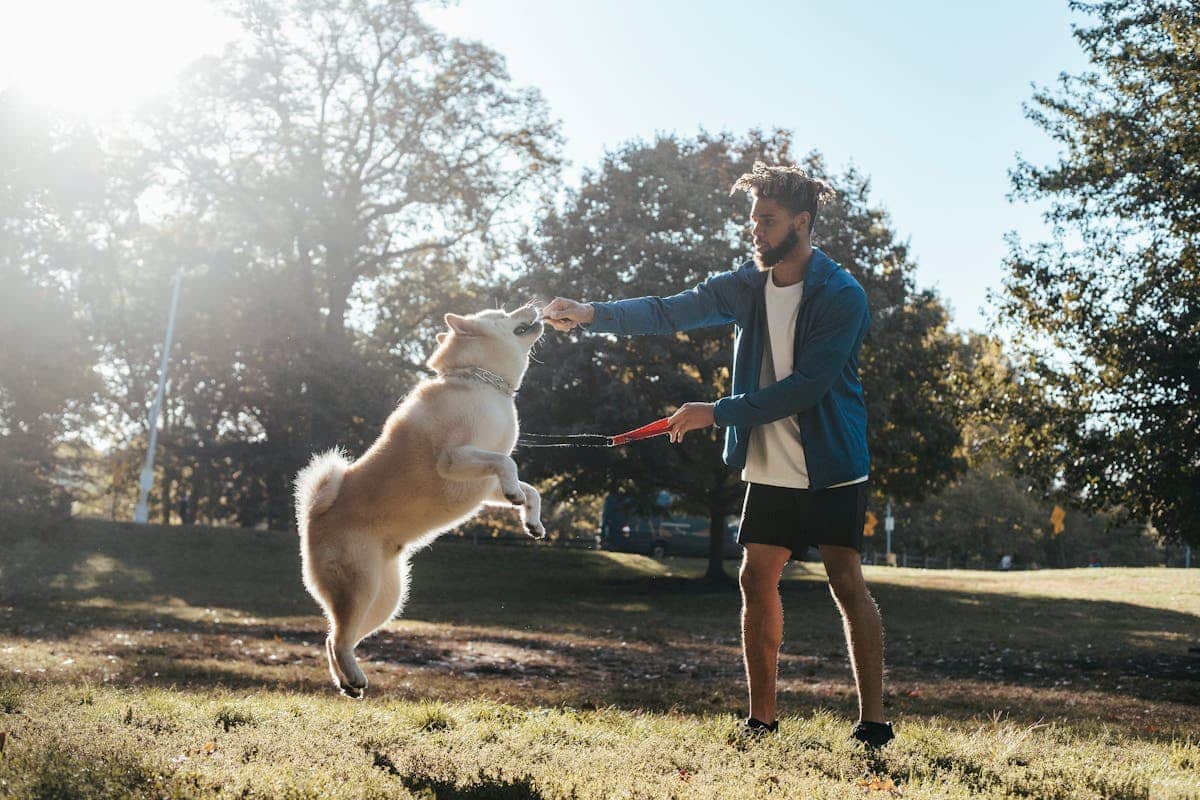Table of Contents
An important piece of the puzzle to having a dog is training them. It makes life a lot easier for both dog owner and dog. For a pet owner, it can be a very fulfilling experience to train their pup. For a dog, it reinforces positive behavior and lets them know what they can do to make their owner proud. Most dogs want to help their owner, be treated well, and enjoy being rewarded. If you aren’t sure where to start, though, it’s not expensive. Anyone can train their dog, even sitting at home.
Here are some ideas for training your dog at home without anything fancy or complicated.
Choose a Training Area
Find a part of your home where you can train your dog to focus without interruption. A quiet room is best, but if you don’t have a completely quiet area, any room with minimal noise will keep them engaged.
Praise and Treats
When you train your dog, you want to encourage it to repeat a desired action. Do this with rewards. The two best are treats or praise for good behaviour. This reinforces to your dog that what they’re doing is the correct action, and they will inherently want to continue it.
Avoid Punishing Your Dog
When your dog pursues a bad course of action, do not punish them. Punishment can confuse your dog, as multiple studies demonstrate. Instead, redirect your dog’s attention to the behavior you want from them and reinforce it with praise.
Wait Until They Are Calm
If your dog barks at you to play, jumps up to say hello when you enter or gets overly excited at home, ignore them. Do not acknowledge unwanted behaviour. The same can be said when you are about to feed them their best dog food. Please wait until your dog is calmer before giving them attention.
Teach Basic Commands
The basic commands to start dog training are ‘sit,’ ‘stay,’ and ‘come.’ These make the foundation of all dog training. When giving commands, use a calm, firm tone every time.
Pair Hand Gestures
Add hand gestures to your commands. Most dogs respond to hand signals better than verbal commands, which can be useful, especially in noisy settings. With advanced training, hand signals become even more important.
Practice Dog Training in Short Sessions
Use 10-15 minutes daily to train your dog. No more, no less. Short sessions tighten the focus and can help if your dog feels overwhelmed by what’s being taught. Furthermore, maintain a consistent time daily so your dog can anticipate training.
Be Consistent with Your Training
Be consistent with training your dog at home. Always use the same words. Reinforce the same behaviour, and do not give in to bad behaviour no matter what. Dogs require consistency to learn new habits and behaviours. If you’re lenient, your dog won’t know what to do.
Test Your Dog During the Day
Test your dog at different points throughout the day, such as asking them to sit or respond to a specific command before you give them their dog food, before a walk, or before play. Make it a part of your routine with them.
Build Up Your Commands In Stages
Start small. A command like ‘stay’ can be complex for a dog. They’ve earned some praise if they take even one step toward you. Move in stages and add on steps as you go further into training. Build up to the entirety of the behaviour you need them to model and give your pup time.
Teach Them Leash Manners Inside
If your dog is new or a puppy, another way to train it at home is to practice leash training indoors. Walk around the house with your pup on a leash. Reward them for walking calmly beside you. Pull gently when they are not. Teach them the correct leash etiquette.
Practice Impulse Control
Engage in games with your dog and teach patience with commands like ‘leave it’ and ‘wait.’ As challenging as it can be at first, your dog will eventually learn, which will help with impulsive behaviours elsewhere in their life.
Introduce Fetch and Drop It
Do short throws around the house of different dog toys. Encourage your dog to retrieve. Use their favourite toy to build interest. Then, teach them to drop the toy with the ‘drop it’s command. Reward them when they comply. Especially with ‘drop it,’ this may take time for your dog to learn.
Praise the Small Things
If your dog struggles to get it right, praise them for small improvements. Don’t get caught up in the end goal of training without celebrating the little wins along the way.
Crate Is a Safe, Positive Space
Crate training is important. Never use their crate as a punishment. Treat it always as a safe and positive space. Make it cozy with blankets and toys. Ensure they are using their crate and that it’s comfortable.


